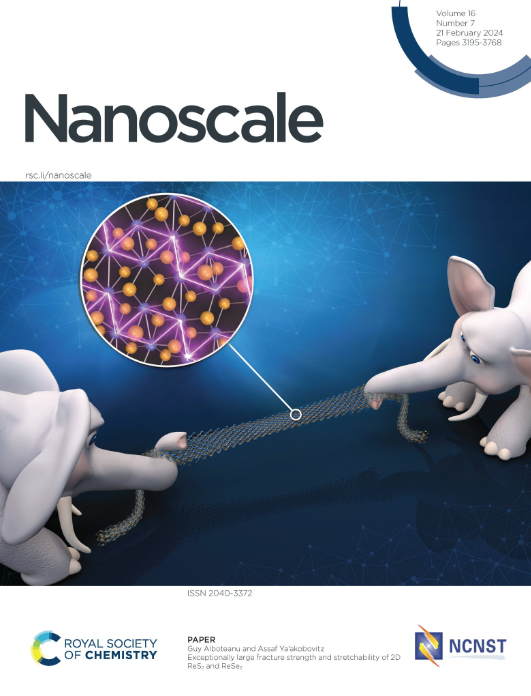介孔金表面增强电化学发光:电化学和光学效应的认识
IF 5.1
3区 材料科学
Q1 CHEMISTRY, MULTIDISCIPLINARY
引用次数: 0
摘要
表面增强电化学发光(SEECL)是一种很有前途的光学生物传感技术,可用于临床诊断中的超灵敏分子检测。本文表明介孔金(mesoAu)是一种合适的SEECL衬底。采用聚苯乙烯块聚氧化物(PS-b-PEO)在硅衬底上电沉积法制备了介面电极。采用扫描电镜(SEM)、x射线光电子能谱(XPS)、Brunauer-Emmett-Teller (BET)、氮气吸附等温线和x射线衍射(XRD)对电极进行了表征。光谱电化学研究采用循环伏安法(CV)和i-t安培法,使用已知的ECL探针tris-2-2'-联吡啶基钌[Ru(bpy)3]2+。结果表明,增强效应与孔径大小密切相关,当孔径调至~50 nm时,增强效应的最大比值为~80。通过测量不同扫描速率下非faradic区域的双层电容电流,表明电化学效应和光耦合的增强可以分开研究。这一研究表明,具有介面非统的SEECL是电化学、光学和质量输运效应的综合。这表明,仔细设计传感接口是获得最佳分析性能的mesoAu启用SEECL生物测定至关重要。本文章由计算机程序翻译,如有差异,请以英文原文为准。
Surface enhanced electrochemiluminescence with mesoporous gold: Understanding the electrochemical and optical effects
Surface enhanced electrochemiluminescence (SEECL) is a promising optical biosensing technique for ultrasensitive molecular detection in clinical diagnostics. Herein we show that mesoporous gold (mesoAu) is an appropriate substrate for SEECL. The mesoAu electrode was fabricated with electrodeposition using polystyrene-block-polyethylene oxide (PS-b-PEO) on silicon substrate. The electrode was characterized by scanning-electron microscopy (SEM), X-ray photo-electron spectroscopy (XPS), Brunauer-Emmett-Teller (BET), nitrogen adsorption isotherm and X-ray diffraction (XRD), respectively. Spectroelectrochemical studies were performed by cyclic voltammetry (CV) and i-t amperometry, using a known ECL probe of tris-2-2'-bipyridyl ruthenium [Ru(bpy)3]2+. It was found that the enhancement was closely related to the pore size, with a maximum ratio of ~80 when the diameter of the pore was tuned to ~50 nm. By measuring the double-layer capacitance current of the non-faradic region at different scan rates, it was shown that enhancements due to electrochemical effects and optical coupling could be studied separately. This work suggests that SEECL with mesoAu is a combination of effects of electrochemical, optical and mass transport. It indicates the careful design of the sensing interface is crucial to obtain optimal analytical performance with mesoAu enabled SEECL bioassays.
求助全文
通过发布文献求助,成功后即可免费获取论文全文。
去求助
来源期刊

Nanoscale
CHEMISTRY, MULTIDISCIPLINARY-NANOSCIENCE & NANOTECHNOLOGY
CiteScore
12.10
自引率
3.00%
发文量
1628
审稿时长
1.6 months
期刊介绍:
Nanoscale is a high-impact international journal, publishing high-quality research across nanoscience and nanotechnology. Nanoscale publishes a full mix of research articles on experimental and theoretical work, including reviews, communications, and full papers.Highly interdisciplinary, this journal appeals to scientists, researchers and professionals interested in nanoscience and nanotechnology, quantum materials and quantum technology, including the areas of physics, chemistry, biology, medicine, materials, energy/environment, information technology, detection science, healthcare and drug discovery, and electronics.
 求助内容:
求助内容: 应助结果提醒方式:
应助结果提醒方式:


